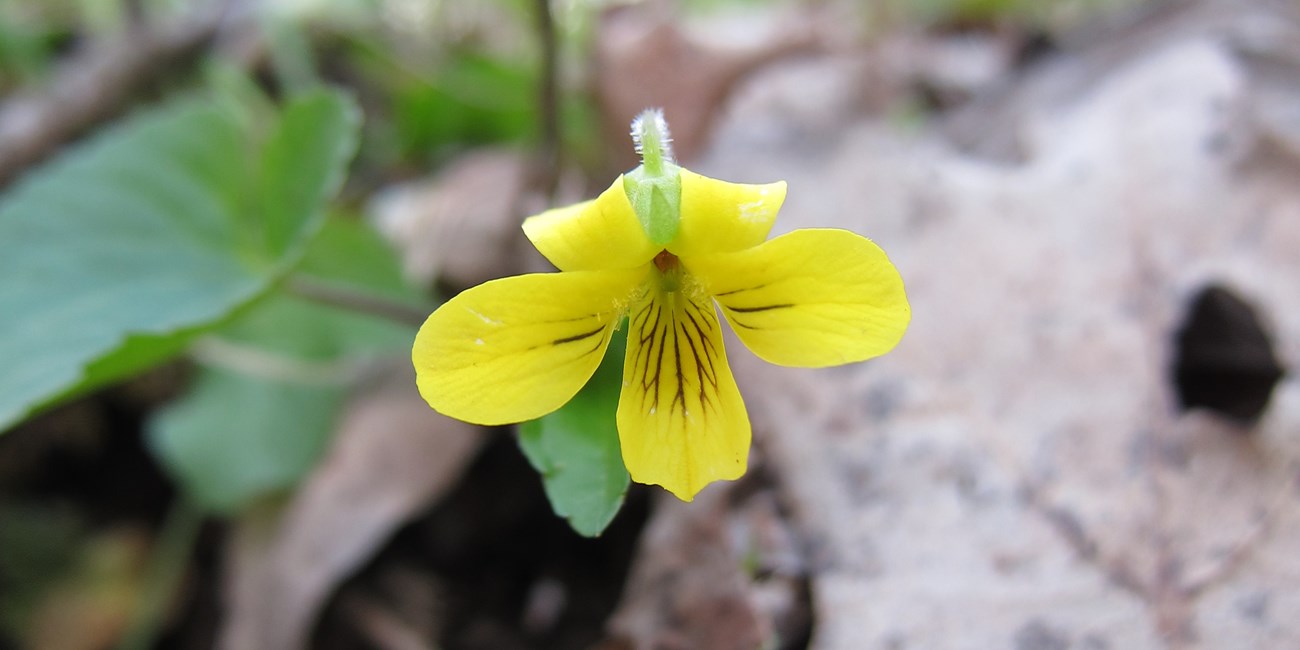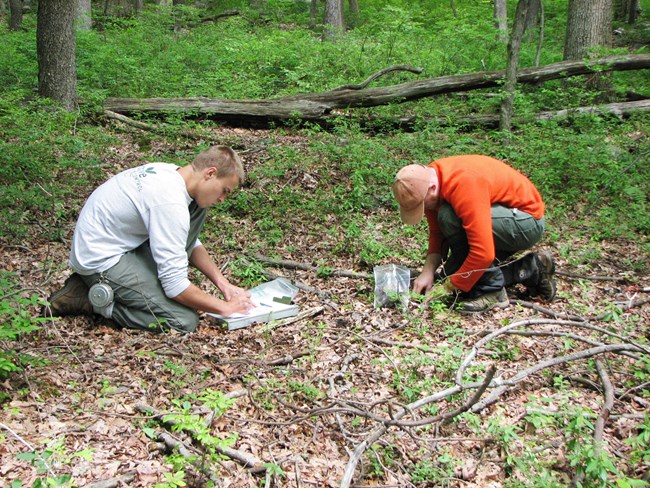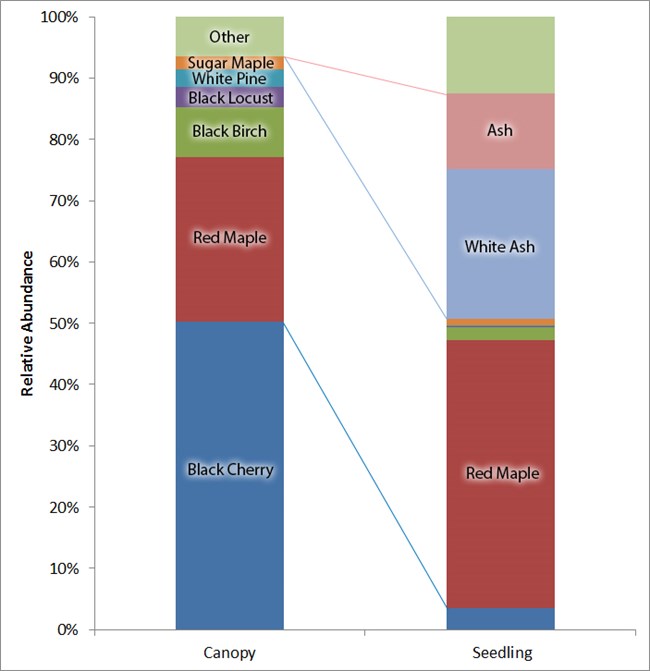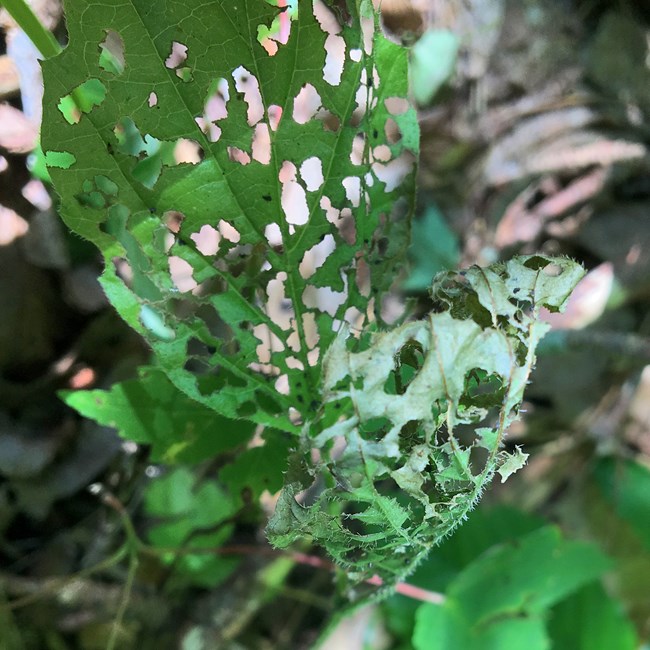Last updated: January 21, 2020
Article
Forest Health Monitoring in Johnstown Flood National Memorial

NPS
The forests of Johnstown Flood National Memorial (JOFL) are critical park resources that perform many important functions. Forests in JOFL create habitat for hundreds of species of plants and animals, as well as maintain soil stability and protect water quality. Besides providing a beautiful setting for people to recreate in, forests also influence our weather and reduce some gases that contribute to climate change.
Monitoring Helps Protect Park Forests

NPS
The Eastern Rivers & Mountains Network (ERMN) monitors forest health by collecting data on canopy trees, tree regeneration, shrubs, plant diversity, downed logs, and soil at permanent monitoring plots established in the parks. Monitoring began in 2007, and ERMN collects data from 12 plots at JOFL over a 4-year rotation, such that each plot is visited every 5th year.
One reason that monitoring forest health is so important is that forests are constantly changing. Storms, pests, pathogens, drought, and new species all play a role in shaping the forest. Studying the different components of a forest gives ERMN information on the health of the forest, and allows park managers to make better informed decisions on how to manage the forest. In particular, mortality (how many trees are dying), recruitment (how many trees are growing into the canopy), and tree growth are important indicators of forest health and vitality.
“How are park forests changing over time in relation to weather, climate, landscape dynamics, invasive species, deer browse, and natural processes such as disturbances and succession?”
Tree Seedlings Tell of a Changing Forest

The forests of JOFL are dominated by red maple (Acer rubrum) and black cherry (Prunus serotina). Red maple seedlings are abundant, whereas black cherry seedlings are scarce, suggesting that black cherry may not be as common in the future canopy.
Ash seedlings (Fraxinus spp.) are more abundant than ash canopy trees. However, these seedlings will likely not survive to maturity unless a biological control is discovered for the emerald ash borer (Agrilus planipennis). Even though ash trees are currently showing strong growth, most of the park’s ash trees will likely die in the next few years due to this invasive insect.
Native Shrub Rebounds from Mysterious Dieback
In 2010, a severe dieback of spicebush (Lindera benzoin) was discovered when the normally dense shrub layer appeared dead. By 2018, much of the spicebush had recovered, with many shrubs sprouting back from bases of old stems. The cause of the dieback is unknown, however the US Forest Service is investigating which pests or pathogens may be responsible.
Invasive Species Impact Forest Health

NPS
Non-native, invasive species dramatically change park forests by degrading wildlife habitat, preventing tree regeneration, and out-competing native plants. In JOFL, multiflora rose (Rosa multiflora) and Morrow’s honeysuckle (Lonicera morrowii) are the most commonly observed invasive exotic plants in the park.
In 2010 the non-native, invasive insect viburnum leaf beetle (Pyrrhalta viburni) was discovered in the park and has been responsible for severe decline in several viburnum shrub species (Viburnum spp.)
For More Information
ERMN tracks forest health in a series of 360 permanent monitoring plots set up in eight national parks. It gathers information on tree health, forest regeneration, plant diversity, invasive species, and more.
To learn more, visit the ERMN Vegetation & Soils webpage.
Or, check out all the sciency details in:
Perles S and Others. 2016. Forest dynamics in national parks in the Eastern Rivers and Mountains Network. Natural Resource Report. NPS/ERMN/NRR—2016/1182. National Park Service. Fort Collins, Colorado
Perles SJ and Others. 2014. Forest health monitoring in the Eastern Rivers and Mountains Network: 2009–2012 summary report. Natural Resource Report. NPS/ERMN/NRR—2014/803. Fort Collins, Colorado
